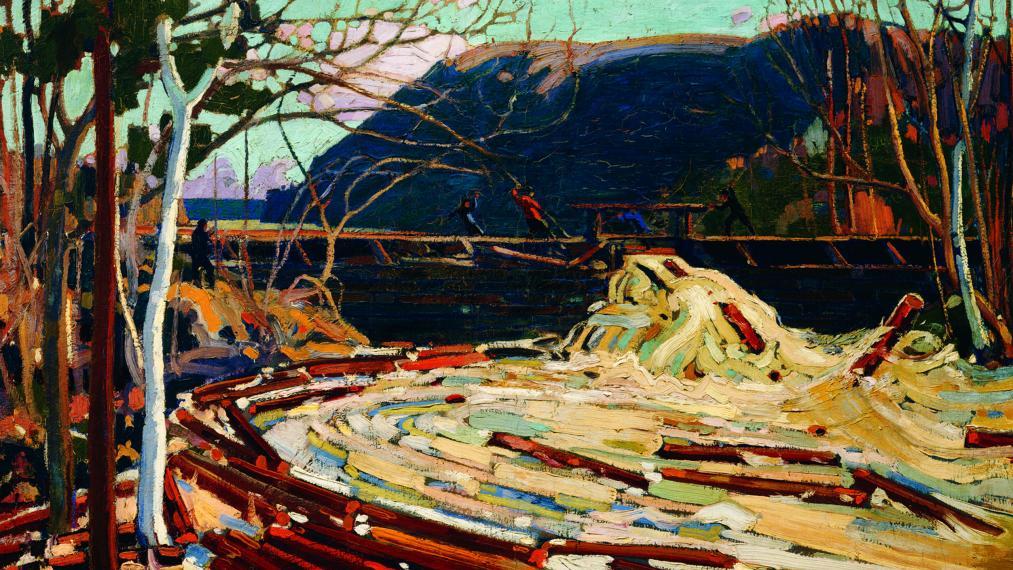Artworks from University of Guelph Art Collection on View at McMichael This Summer

Two paintings from the University of Guelph’s art collection by renowned Canadian artist Tom Thomson will be on view at the McMichael this summer. Opening to the public on Saturday, June 24, the exhibition Tom Thomson: North Star takes a close look at the artist’s legacy through the lens of his distinctive “plein air” oil paintings, examining how his artwork transformed Canadian painting in the early 20th century.
Tom Thomson (1877–1917) produced approximately 400 oil sketches on small wood panels as well as roughly 50 larger works on canvas. Landscape was often his subject matter, capturing aspects of the natural terrain as well as the impacts of industrialization in the early 20th century. This is clear in the two works from the University of Guelph's collection included in North Star, in particular Thomson’s large painting on canvas called The Drive (Feature image), from 1916-1917, which highlights the logging industry in Algonquin Park. A frequent focus of Thomson's work, the painting shows figures on a dam directing logs down a canal towards the Ottawa River. The painting was purchased in 1926 by the Ontario Agricultural College, one of the University’s founding colleges, with funds raised by students, faculty and staff.
The other work on view – The Alligator, Algonquin Park – was painted by Thomson in 1916 and depicts a unique vessel used in Canada’s oldest provincial park that had a powerful winch with which it could tow log booms across water and haul itself over land as needed. A gift of Stewart and Letty Bennett, the painting was donated to the University of Guelph by the Ontario Heritage Foundation in 1988.

Tom Thomson, The Alligator, Algonquin Park, 1916, oil on composite wood-pulp board, 21.5 × 26.8 cm. Gift of Stewart and Letty Bennett, donated by the Ontario Heritage Foundation to the University of Guelph, 1989. University of Guelph Collection at the Art Gallery of Guelph.
Both paintings are held in the vaults of the Art Gallery of Guelph and were most recently on view at the gallery in 2019 in the exhibition The Drive. Situating four of Thomson’s paintings and those of members of the Group of Seven from the collection in relation to the work of contemporary artists, the exhibition subsequently toured to other Canadian art museums.
For the Director of the Art Gallery of Guelph, Dr. Shauna McCabe, the ability to share and revisit older artworks like these is critical. “It’s important to recognize that historical artworks continue to have contemporary relevance and impact,” she suggests. “These artworks have been featured in many, many exhibitions throughout the century since they were created, which is vital as this ensures the paintings not only have public currency but they are regularly revisited and reconsidered in relation to new ideas.”
While also accessible digitally through the gallery’s online collection, McCabe anticipates the paintings will continue to be on view in other venues in the future. “Our role as an art museum is not only to care for these collections in perpetuity but to make sure students, researchers, the community, and other institutions have access to them. This is work we are engaged in daily on an ongoing basis. Artworks in national collections like ours are described as held in ‘public trust’ which means they belong to the ‘whole of the people’.” Find more information about the exhibit by visiting the McMicheal Exhibit Wesbite.